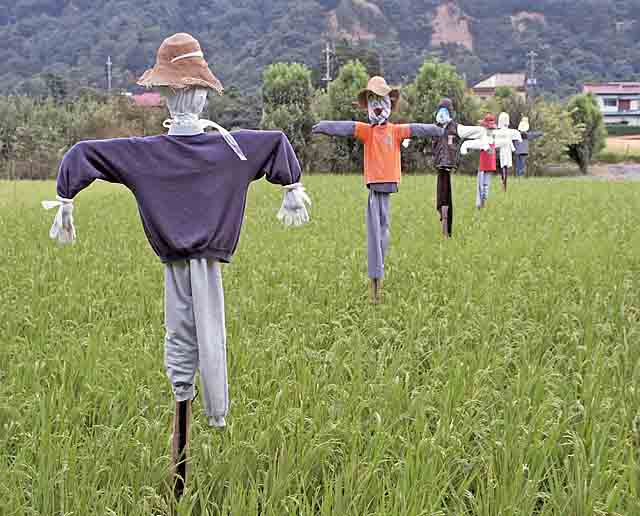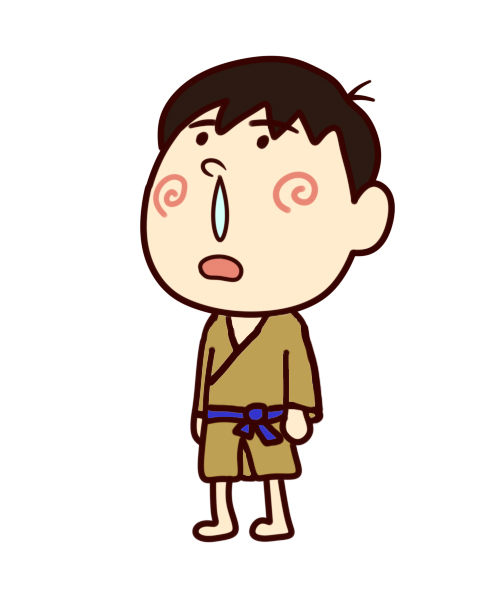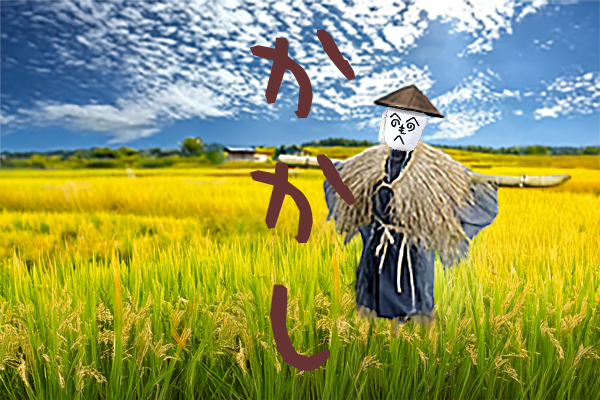Kakashi
Yamada no naka no ippon ashi no kakashi
Tenki no yoi noni mino kasa tsukete
Asa kara ban made tada tachidooshi
Arukenai no ka yamada no kakashiYamada no naka no ippon ashi no kakashi
Yumiya de odoshite rikinde iredo
Yama de wa karasu ga kaa ka to warau
Mimi ga nai no ka yamada no kakashiLyricist:MUSAKA San
Composer:Unknown
in 1911
Scarecrow
A one-legged scarecrow in the rice field
Wearing a straw raincoat despite the fine weather
Standing all day long from morning to night
Is it because you cannot walk, scarecrow in the field?
A one-legged scarecrow in the rice field
Threatening with a bow and arrow, acting tough
But the crows in the mountains laugh, “Caw, caw”
Is it because you have no ears, scarecrow in the field?

The “traditional watchman” standing in the rice fields
The Kakashi, Japanese scarecrows, which can be called an essential “character” in the landscape of Japanese rice fields, is not only important for its practical use in rural areas but also holds deep symbolic meaning rooted in spiritual and cultural traditions. Practically speaking, Kakashi have been placed in rice paddies mainly to protect crops from crows and sparrows. However, in Japanese folk beliefs, they are said to serve as the yorishiro (temporary vessel) of the ta no kami (rice field gods). In rural communities, pest damage from birds and animals was not seen as a mere natural issue but was believed to be caused by malevolent spirits. The Kakashi were thought to possess the power to ward off such spirits. Additionally, the practice of dressing the Kakashi in straw coats and hats symbolized their role as visitors from the gods or the other world, indicating that they were revered as sacred beings rather than mere scarecrows. In this way, the Kakashi were regarded as the incarnations of the ta no kami(rice fields gods) or yama no kami (mountain gods), serving as sacred protectors of the fields.

パブリック・ドメイン, リンク
You’ll Even Find Them in Folktales
The fact that the Kakashi simply stands there, doing nothing, sometimes leads to it being dismissed as “useless,” as even children tease it in songs. Yet, in the context of agricultural society, it played a crucial role. People felt a sense of security and familiarity in the very presence of the Kakashi, which can be seen as a guardian silently watching over the community. This mindset is also reflected in characters like Yotaro from rakugo, who, despite his incompetence, is loved by those around him. In Japanese culture, there is a deeply ingrained attitude of accepting and respecting things, even if they appear useless.

So Familiar, Yet a Bit Uncanny
Scarecrows can be found in other countries as well, but in the West, their function is more practical. Many scarecrows are equipped with moving mechanisms or devices that make sounds to scare off birds and animals, and they are often designed to increase visual deterrence using reflective materials or materials that sway in the wind. In the West, the scarecrow is less a sacred figure and more a tool designed for the efficient protection of crops. Moreover, in Western stories such as The Wizard of Oz, scarecrows are often depicted as characters with personalities, symbolizing the search for wisdom and emotions.

Still Standing as a Symbol of Rural Japan
In contrast, Japanese Kakashi are characterized by their stillness and silence, carrying the sacred role of protecting the fields. The spiritual power imbued in the seemingly powerless Kakashi, and its symbolism as a protector of the community, reflects Japan’s unique perspective on agriculture, nature, and spirituality.




コメント